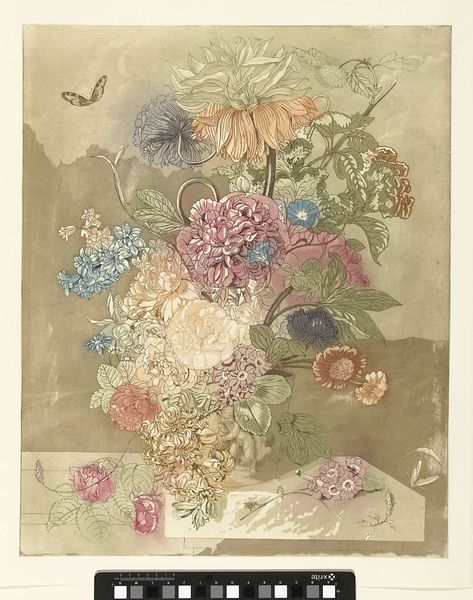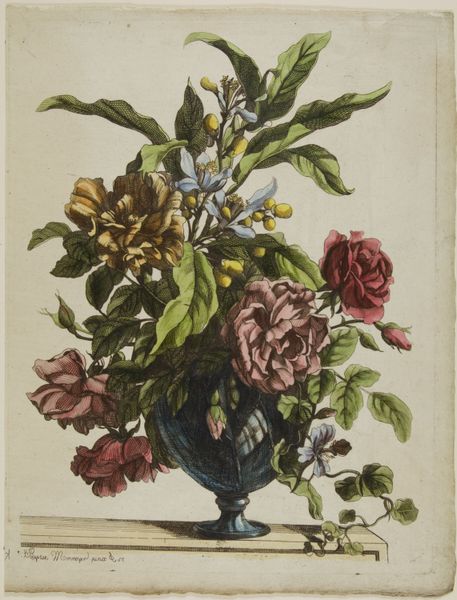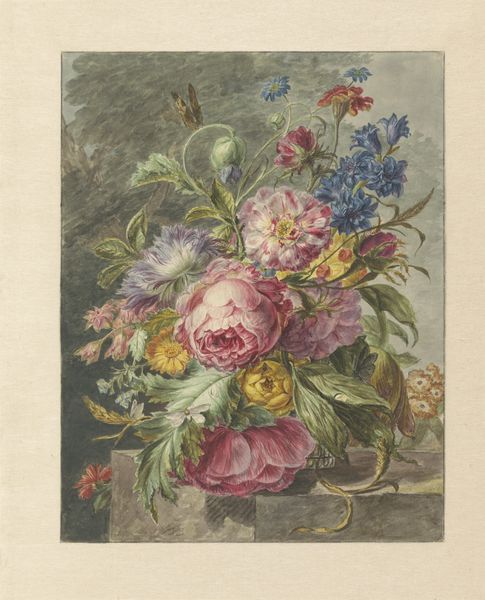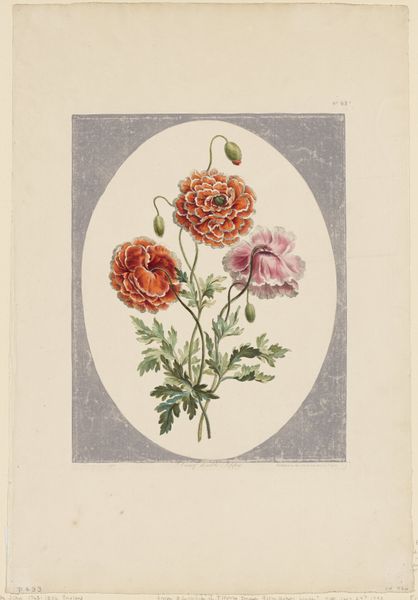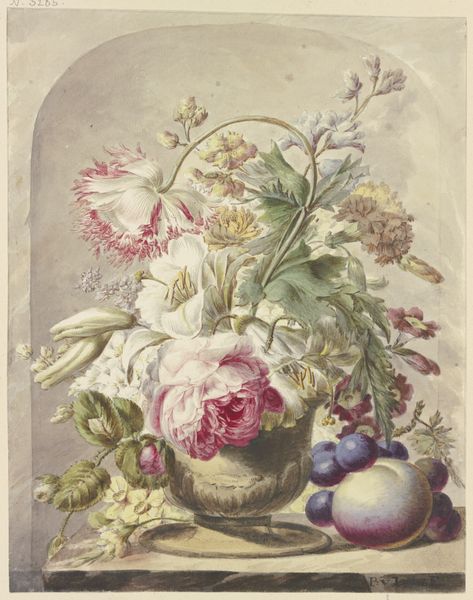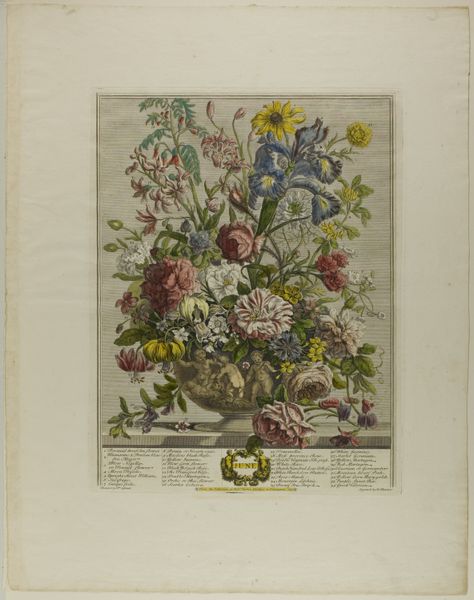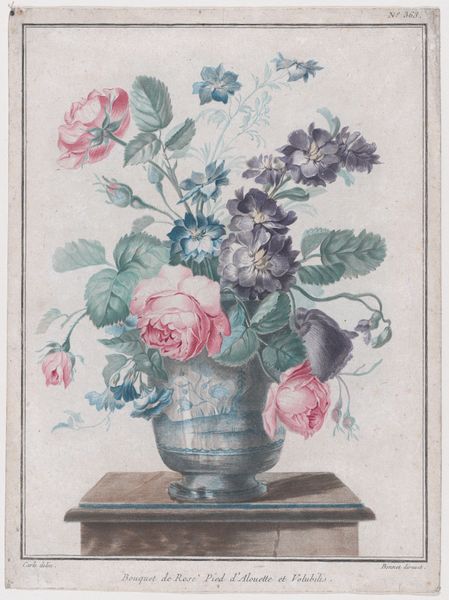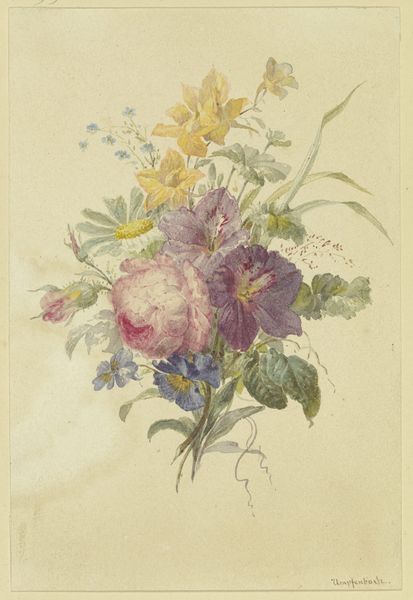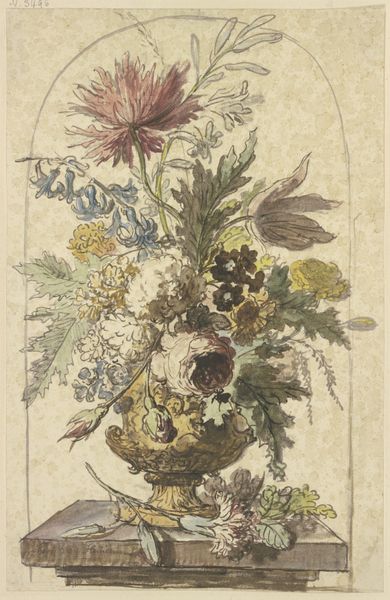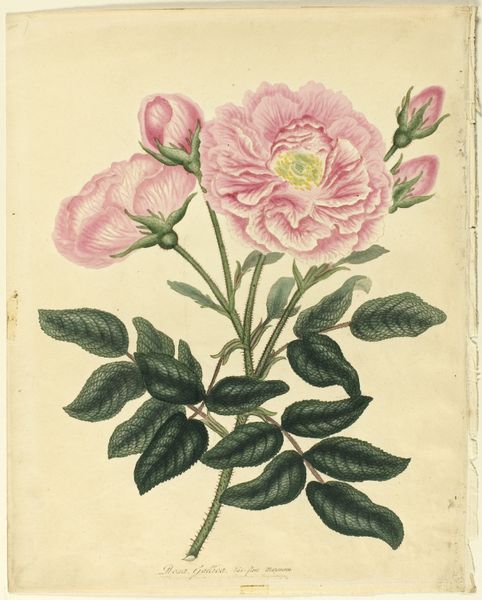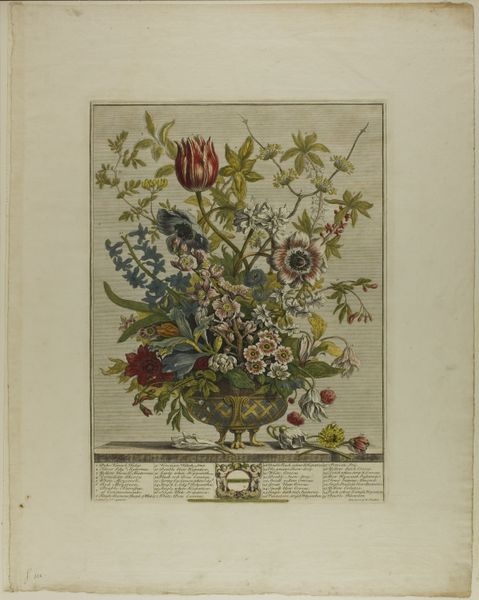
painting, watercolor
#
water colours
#
painting
#
flower
#
watercolor
#
romanticism
#
botanical drawing
#
watercolour illustration
#
botanical art
#
watercolor
Dimensions: height 291 mm, width 226 mm
Copyright: Rijks Museum: Open Domain
Curator: The "Bouquet, Model for Embroidery," rendered in watercolor by A. Lutz between 1809 and 1822, presents us with an intimate glimpse into the artistic practices surrounding decorative arts. Editor: My initial response is one of subdued joy; it’s incredibly delicate. The pale washes give it a ghost-like ethereal feel, a very Romantic sensibility indeed. Curator: Absolutely. We need to situate this artwork within its period. During the Romantic era, the rising bourgeoisie and shifting power dynamics greatly influenced artistic expressions. These floral patterns and embroidery designs empowered women especially through domestic craft. Editor: You're right to focus on that. There’s such careful arrangement in the way Lutz depicts each petal and leaf, as if each form is meant to convey an idea, maybe even echo classical concepts of beauty through the language of flowers. I wonder what each species signifies. Curator: The accessibility and reproducibility of these botanical watercolors is key, providing women with access to art practices without requiring specialized artistic education. And it provided a creative output that didn't interfere with their gender roles. The democratization of artistic expression here needs considering in connection to gender, class, and access. Editor: Beyond the social considerations, the persistent human attraction to nature in art shines here. Look at the way Lutz handles light – it isn't just illumination, but creates mood, speaks to transient beauty. The bouquet acts like a container for emotional expression that runs far beyond just 'decoration', doesn't it? Curator: I couldn't agree more. This design embodies more than aesthetic pleasure; it's about access and female artistry at a time when many art practices excluded women from certain circles. This floral still life is deeply political because it is deceptively pretty. Editor: Yes, it goes far beyond being an image for decoration. To create with floral imagery like this is to participate in a visual language loaded with symbols of love, remembrance, and even warning. Lutz is invoking something timeless and profound here. Curator: By bringing together art history, gender studies, and sociology, this seemingly delicate image brings complex historical narratives into sharp relief. Editor: And I think that’s also a good insight as to why we're still looking at it now: symbols are there, resonating and encouraging contemplation beyond a simple pleasure to the eye.
Comments
No comments
Be the first to comment and join the conversation on the ultimate creative platform.
